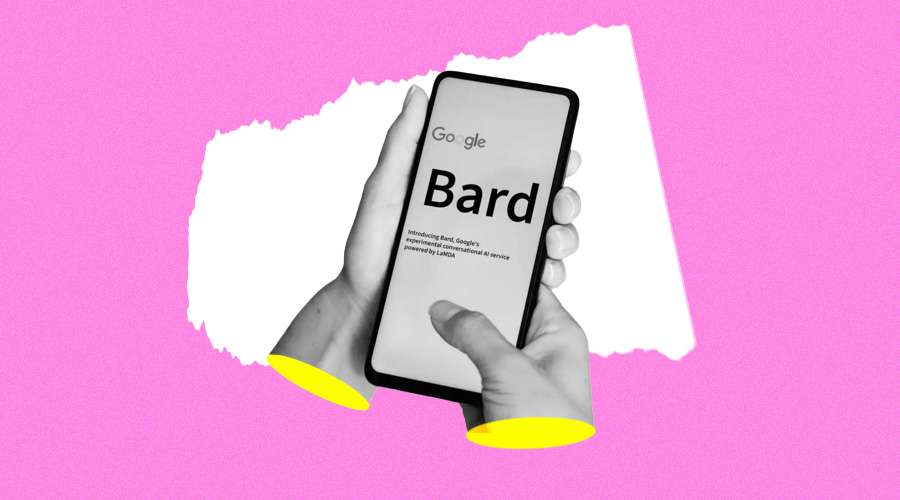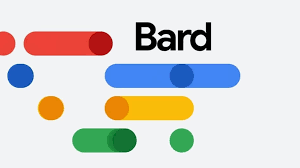How to Use Google Bard API Key Free

The Google Bard API is a powerful tool that provides access to Google’s extensive language models, allowing you to generate text, translate languages, create various types of creative content, and obtain informative responses to your questions. This guide will provide you with insights into what the Google Bard API is and how to make effective use of it.
Google Bard is a conversational AI model designed to assist individuals in brainstorming ideas, enhancing productivity, and performing a wide range of tasks. It leverages the PaLM 2 large language model to deliver responses to human queries.
Starting May 5, 2023, Google Bard AI will be available in more than 180 countries, ensuring accessibility to users worldwide. To access the platform, simply visit its official website.
What is the Google Bard API?

The Google Bard API empowers users to integrate the formidable capabilities of Google’s extensive language models into their applications. With this API, you can harness the ability to generate text, perform translations, seek answers, and foster creative thinking.
Developers can leverage the Google Bard API to create a diverse range of applications, such as chatbots, text generators, language translators, and apps capable of providing informative responses to user inquiries. What makes the Bard API particularly valuable is that it offers developers the flexibility to incorporate Bard’s features into their applications without the need for extensive additional coding.
To get started, users will need to obtain an API key, which is the key to unlocking the potential of the Google Bard API. Once developers have secured their API key, they can seamlessly integrate the Bard API into their existing applications. This integration empowers developers to customize their apps using the Google Bard API, tailoring them to meet specific and unique tasks.
What are the limitations of the Google Bard API?
When using an API like the Bard API, there may be certain limitations or restrictions to consider. Although I don’t have specific information about the Bard API, here are some general limitations or considerations that commonly apply to APIs:
- Rate Limits: APIs often impose rate limits, which restrict the number of requests you can make within a specific time period. These limits are in place to ensure fair usage and prevent abuse or overload of the system. It’s important to be aware of the rate limits and design your application accordingly.
- Usage Quotas: APIs may have usage quotas that limit the amount of data you can process or the number of API calls you can make per day or month. Keep track of your usage to ensure you don’t exceed these quotas and plan your application usage accordingly.
- Data and Content Restrictions: APIs might have restrictions on the types of data or content you can process or generate. For example, there may be limitations on processing sensitive personal information or generating inappropriate or offensive content. It’s essential to review the API’s terms of service and usage policies to understand any restrictions or guidelines.
- API Stability and Changes: Google Bard APIs can undergo updates, improvements, or changes over time. It’s important to stay informed about any updates or deprecated features, as they might affect your implementation. Regularly check for API documentation updates, subscribe to relevant mailing lists or forums, or follow official channels to stay informed about changes.
- Authentication and Security: APIs often require authentication using API keys, tokens, or other mechanisms to ensure secure access. It’s crucial to handle authentication securely and protect your API credentials to prevent unauthorized access.

Install the python-dotenv module in order to use this within your code. The following code in our bard.py file uses the Bard-API Python package to access the API. To properly authenticate, it retrieves the cookie value from the environment file. You can use the aforementioned function directly in your Python code.
To initiate the use of the Bard API in your programs, the first step involves setting up a Google Cloud Platform project and enabling the Bard API within it. Following this, you’ll need to establish a service account and obtain the necessary JSON key file by downloading it. With these initial steps completed, you’ll be well-equipped to commence the utilization of the Bard API within your applications.
To begin integrating the Bard API into your programs, follow these steps:
- Start by creating a Google Cloud Platform project and activating the Bard API within it.
- Establish a service account and obtain the necessary JSON key file by downloading it.
- Depending on the programming language you’re working with, install the appropriate Bard API library, which is available for both Python and Node.js.
- Import the Bard API library into your code to access its functions and features.
- Set your Bard API key to authenticate your requests and gain access to the API’s capabilities.
- Formulate a request to the Bard API, providing the text prompt that you want Bard to process.
- To use the generated information or responses as needed, retrieve the response that Bard generates and smoothly incorporate it into your software.
Here are some apps that demonstrate the use of the Google Bard API:
- Write text in the form of emails, letters, scripts, poems, code, and music.
- Convert languages
- Respond to inquiries in a thorough and educational manner.
- Text summarization
- Construct virtual assistants and chatbots.
- Create material for social media and websites.
- Create fresh applications for AI
Why use the Bard API?
Here are a few examples:
- To generate text: poetry, scripts, code snippets, musical creations, email messages, letters, and more may all be produced using the Bard API’s variety. This versatility opens the door to a multitude of applications, including crafting content for websites and social media, fueling the development of innovative AI applications, and addressing a host of other creative and practical tasks.
- Language translation: Text can be translated between more than 200 languages using the Bard API. This can be helpful for people who need to translate documents or other materials, as well as for companies that need to speak with clients in other languages.
To access the Bard API, you need to obtain an API key. The steps for obtaining an API key to access the Google Bard API are typically as follows:
- Visit the Google Cloud Console (console.cloud.google.com) and create a new project or select an existing project.
- Enable the Bard API for your project. This can be done by navigating to the API Library in the Cloud Console, searching for the Bard API, and enabling it.
- Set up the necessary authentication credentials. This may involve creating a service account, generating and downloading a JSON key file, or configuring OAuth 2.0 credentials.
- Once you have the required credentials, you can include the API key or authentication details in your API requests to authenticate and authorize access to the Google Bard API.
- Make a new API key. Go to the Google Cloud Dashboard’s Privileges tab and choose the “Create credentials” option to generate a Bard API key. Choose “API Bard key” from the list of options, then follow the directions to create a new API key.
- Make another copy of the API key you use and save it safely. Using this API key in your app to authenticate with the Bard API would be best.
What are the differences between ChatGPT and Bard?
Bard was designed for study. ChatGPT works better for content generation, particularly when data is provided, like in the case of summarizing an article. Users can inquire about current conditions, including the weather, using Bard’s ability to handle real-time data. Bard offers advice on how to dress for the weather in addition to the forecast.
- Similar to Bard, ChatGPT allows users to type in a question and get a response that seems human.
- The data source is the primary distinction between Bard and ChatGPT. Bard is updated with the most recent information since it continuously pulls data from the internet.
- Bard employs Palm 2, the newest language model from Google. ChatGPT employs GPT-3.5 technology; ChatGPT Plus, a premium version, offers GPT-4 technology.
- Bard generates content in larger chunks, whereas ChatGPT generates content in a single text prompt.
- While ChatGPT accepts any email account, Bard requires a Google account for users to log in.
How do I join the Google Bard API waitlist?

By signing up for the Bard API waitlist, you can be sure to be at the vanguard of this artistic revolution, receive updates, and have first access to a platform that will undoubtedly redefine the limits between technology and art.
To join the Bard API waitlist and stay informed about updates and early access opportunities, follow these steps:
Visit the Bard API website, which may be accessed by searching for “Google Bard API” or by visiting the Google developer platform.
You must have a Google account in order to add yourself to the waitlist. Use your login information to log in if you already have one. If not, click the “Sign Up” or “Create Account” button to start a new account.
- Give your contact details.
- You accept the terms and conditions.
- Send in your waiting application.
- As soon as you sign up for the waitlist, you’ll get notifications, updates, and pertinent news on the Bard API.
Benefits of the Bard API Applications
For developers, artists, and art fans, the Bard API has a lot to offer in terms of advantages and new opportunities. Here are some important uses:
1. With the help of the Bard API, art students can research and evaluate a variety of artistic genres. Students can enhance their artistic abilities and get a more profound comprehension of art history by engaging with AI-generated artwork.
2. By adding AI-generated features to their works, artists can now explore new creative channels thanks to the API. It provides artists with motivation to try out new styles and methods that they might not have thought of otherwise.
3. Using the Bard API, developers may create original visual content for applications, websites, and marketing collateral. This offers a novel and striking method to captivate users and improve brand visibility.
Google Bard API pricing:
It’s in beta right now, and only a select group of people can use it. On the Google AI website, there is a waitlist registration option.
Google Bard API Python:
It is noteworthy for individuals who are enthusiastic about incorporating Google Bard with Python that an official API is not yet accessible. On the other hand, we can use Daniel Park’s Bard API in a Python context.
Google Bard API documentation:
You can find complete usage instructions for the Bard API in the documentation. The manual also includes examples of how to utilize the API.
Google Bard API nodejs:
One useful tool that lets you leverage Bard’s features from within your Node.js environment is the Bard Node.js library. You can incorporate Bard’s natural language replies into your Node.js apps with ease by using the Bard Node.js module.
Is Google Bard API free?
It’s true that the Google Bard API is free. You don’t need to pay for credentials or API fees to utilize the Google Bard API.
See More:





